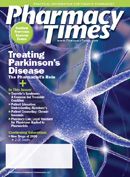Hypertension Watch
Targeted Approach for Preventing Hypertension
“If you live long enough in this country, you are almost guaranteed to get hypertension,” says Corinne Husten, MPH, MD, and member of the Institute of Medicine’s (IOM) Committee on Public Health Priorities to Reduce and Control Hypertension in the US population. In February, the committee released a report—sponsored by the Centers for Disease Control and Prevention through its Division for Heart Disease and Stroke Prevention (DHDSP)—calling for a new approach to the treatment and prevention of hypertension.
Husten and her colleagues call for the DHDSP to use population-based strategies that would educate at-risk populations and address the causes of hypertension in whole communities. At-risk populations for high blood pressure include individuals who are elderly, obese, sedentary, or eat an unhealthy diet. The IOM report recommends that the DHDSP partner with state and local public health agencies to encourage exercise and a diet that includes a reduction in sodium (see below) and an adequate intake of potassium for these groups.
The report concludes that these measures could improve lives and “[reduce] mortality and morbidity due to heart disease and stroke.”
Reduce Salt, Protect the Heart
The American Heart Association (AHA) recommends a limit of 1500 mg of sodium per day, but the average American consumes twice that amount. Excess salt intake is linked to hypertension, coronary heart disease, and stroke. A study published in the February 18, 2010, issue of the New England Journal of Medicine suggests that eliminating 3 g of dietary salt (1200 mg of sodium) per day could help prevent these conditions.
Researchers from the University of California-San Francisco used a computer model to analyze data from studies on US adults with heart disease aged 35 to 84. They estimated that a 3-g reduction would decrease the yearly number of new cases of stroke by 32,000 to 66,000; heart attacks by 54,000 to 99,000; and coronary heart disease by 60,000 to 120,000. The annual number of deaths by any cause would drop 44,000 to 92,000 cases.
For an individual with high blood pressure, a 3-g reduction of salt—equivalent to one-half teaspoon—could lower systolic blood pressure by 3.6 to 5.6 mm Hg. Pharmacists who counsel patients to reduce salt intake should note that the AHA reports that processed foods account for 75% of dietary sodium; added table salt accounts for only 6%.
Dementia Predicted by High Blood Pressure
Hypertension may predict dementia in certain populations of older adults, according to a study conducted by researchers at the University of Western Ontario in Canada. The researchers examined the association between hypertension and cognitive deterioration in 990 patients (average age, 83) for 5 years in the study, which was published in the February issue of the Archives of Neurology.
At the onset of the study, none of the patients had dementia, but were classified as having impaired executive function (difficulty with decision making and organizing thoughts), memory dysfunction, or both. Dementia developed in 59.5% of patients with hypertension and in 64.2% of those without. No correlation was found between hypertension and dementia in patients with memory dysfunction alone or in patients with memory and executive function impairment.
In patients with executive dysfunction alone, however, 57.7% of those studied with hypertension developed dementia, as compared with 28% of patients without high blood pressure. The researchers noted that for patients with impaired executive functioning, “control of hypertension in this population could decrease by one half the projected 50% 5-year rate of progression to dementia.” Strokes Increasing Among Young People
The average age of stroke patients is dropping, according to a new report presented by researchers in February at the American Stroke Association’s International Stroke Conference 2010. The researchers included data from approximately 1.3 million people from 5 Ohio and Kentucky counties in the report, and found that individuals younger than 45 accounted for 7.3% of stroke victims in 2005, up from 4.5% in 1993.
Rising rates of high blood pressure, obesity, and diabetes are likely to blame for the increase in young stroke patients, the researchers note. Lack of education also plays a role, since most stroke prevention efforts are typically geared toward the elderly. Brett M. Kissela, MD, of the University of Cincinnati Neuroscience Institute, and one of the researchers on the study, notes that patients younger than 45 are more likely to skip annual physicals with a physician if they are asymptomatic. Young patients should be counseled to eat a healthy diet, exercise, and quit smoking to reduce the risk of stroke. â–
FAST FACT: In 2009, hypertension cost the US health care system more than $73 billion in direct and indirect costs.

